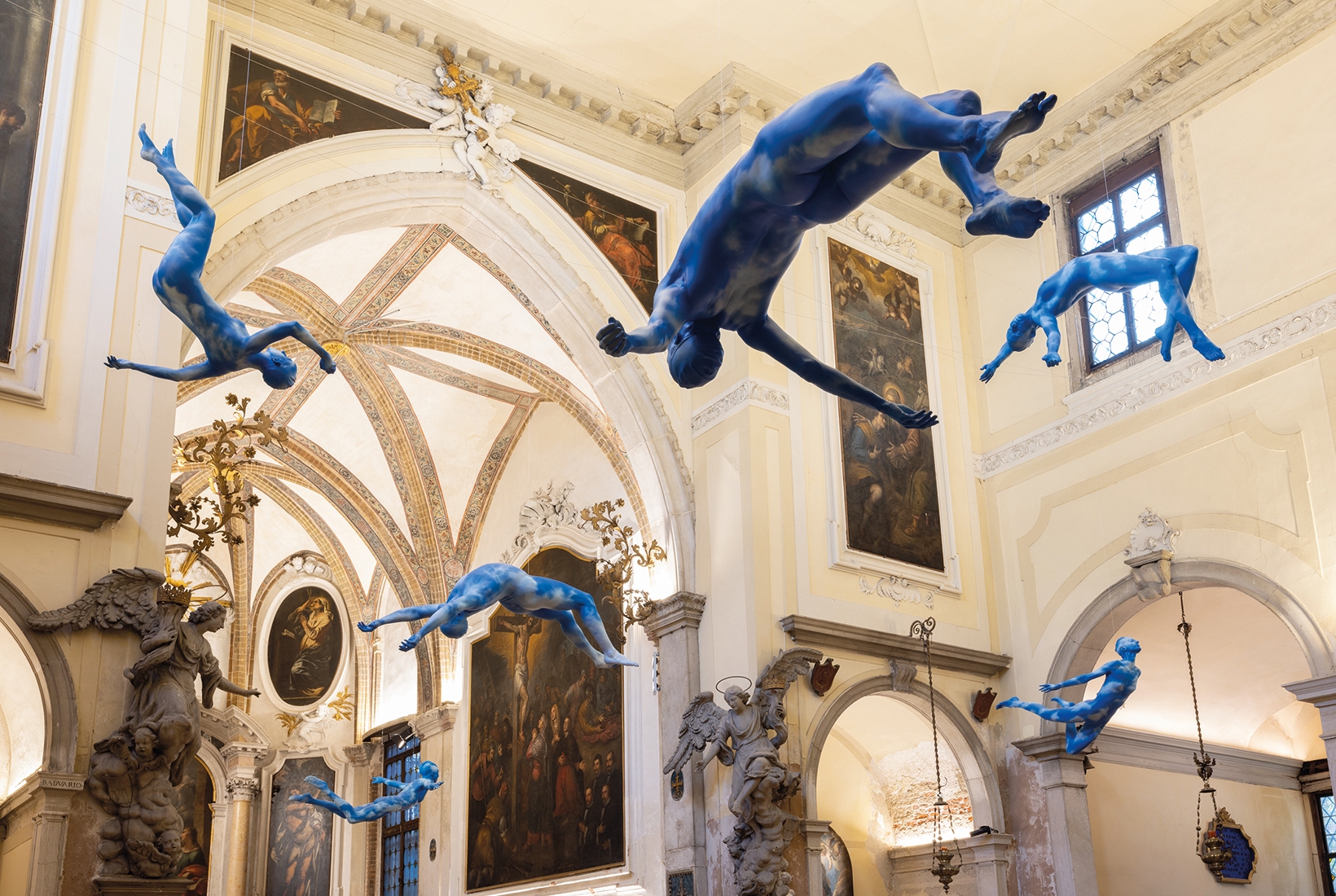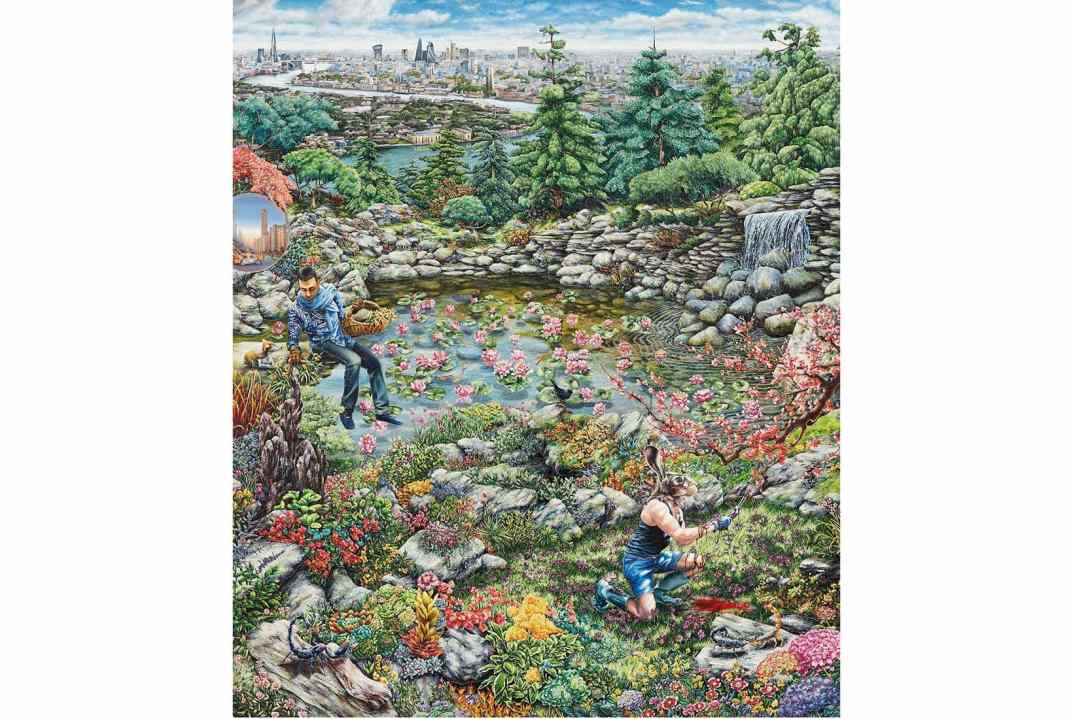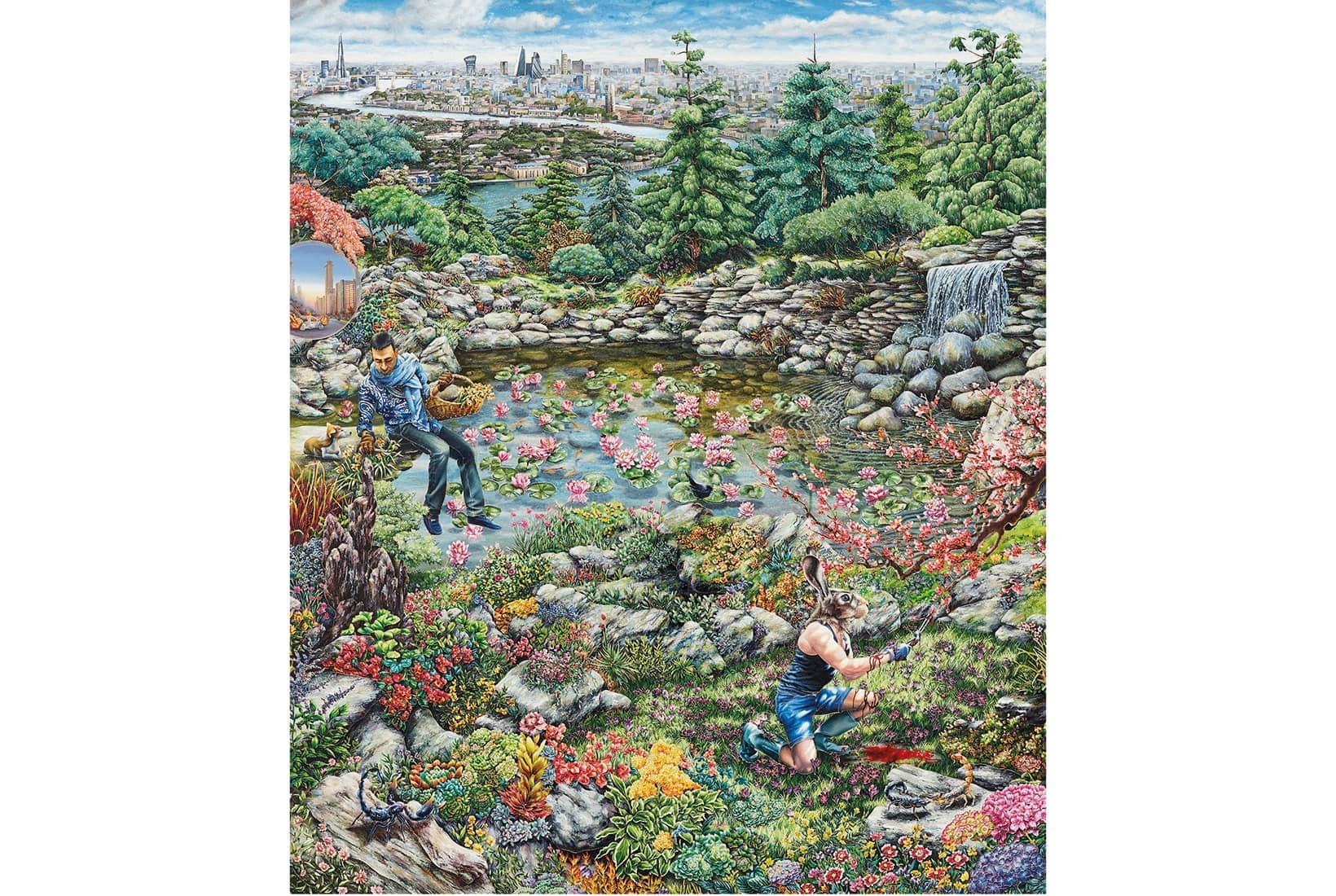Describing the Venice Biennale, like pinning down the city itself, is a practical impossibility. There is just too much of it, tucked away, scattered throughout the maze of alleyways and canals. And the art is no longer confined to the Biennale’s national pavilions in the gardens. It has spread, via dozens of tagalong shows cashing in on the presence of the global art world, to a motley array of disused palaces, warehouses, churches, at least one shop and a hidden garden loggia. A good way to sample it is just to follow your fancy: step through an ancient doorway and find out what is on the other side.
That’s how I came across a little show by the Swiss artist Ugo Rondinone in the venerable Scuola Grande di San Giovanni Evangelista. Inside the oratory, naked, sky-blue sculpted figures dangle from the ceiling, mingling with the baroque angels of the existing decoration (see below). The effect is contemporary yet time-honoured, since Venetian churches are often filled with fluttering, near-naked bodies (sometimes painted by Tiepolo).

That illustrates something that makes the Biennale fun. It happens in the spot where many of the features of art as we know it first appeared. Thus the combination of paint on canvas was, if not actually invented in Venice, something that became standard in the city.
A good way to sample the Biennale is to step through an ancient doorway and find out what is on the other side
There’s a lot of painting around this Biennale. After decades in which video has been the medium in vogue, the seesaw of art fashion is tilting towards (fairly) traditional pictures and sculpture. Although, of course, the fact that the medium is familiar is no guarantee of quality.
Nonetheless, there is admirable painting on display.









Comments
Join the debate for just £1 a month
Be part of the conversation with other Spectator readers by getting your first three months for £3.
UNLOCK ACCESS Just £1 a monthAlready a subscriber? Log in